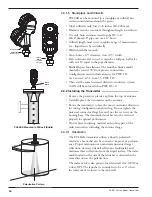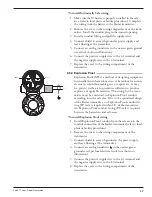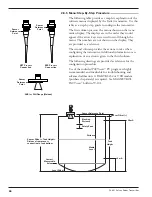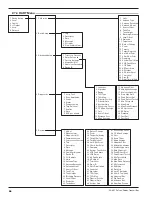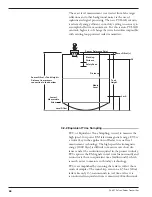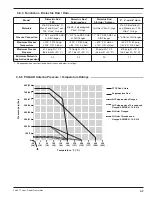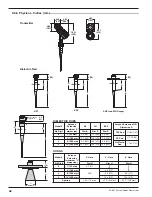
27
58-601 Pulsar
®
Radar Transmitter
3.0 Reference Information
This section presents an overview of the operation of the
PULSAR Radar Level Transmitter, information on trou-
bleshooting, common problems, listings of agency
approvals, lists of replacement and recommended spare
parts, and detailed physical, functional and performance
specifications.
3.1 Description
PULSAR is a two-wire, 24 VDC, level transmitter based on
the concept of pulse burst radar. The electronics are housed
in an ergonomic housing comprised of two tandem com-
partments angled at a 45 degree angle for ease of wiring and
calibration. These two compartments connect via an explo-
sion-proof and watertight feed-through.
3.2 Theory of Operation
3.2.1 Pulse Burst Radar
PULSAR is a top-mounted, downward-looking pulse burst
radar operating at 5.8 GHz (Europe) or 6.3 GHz (North
America). Unlike true pulse devices that transmit a single,
sharp (fast rise-time) waveform of wide-band energy, PULSAR
emits short bursts of 5.8 or 6.3 GHz energy and measures
the transit time of the signal reflected off the liquid surface.
Distance is calculated utilizing the equation Distance = C
×
Transit time/2, then developing the Level value by factoring
in Tank Height and Sensor Offset information. The exact
reference point for distance and level calculations is the
Sensor Reference Point—bottom of an NPT thread, top of
a BSP thread or face of a flange.
Distance = c
×
(
ti
m
e
÷
2)
1
ns
500
ns
NPT
Process
Connection
BSP
Process
Connection
ANSI or DIN
Welded Flange
Sensor Reference Point
Pulse
Pulse Burst


